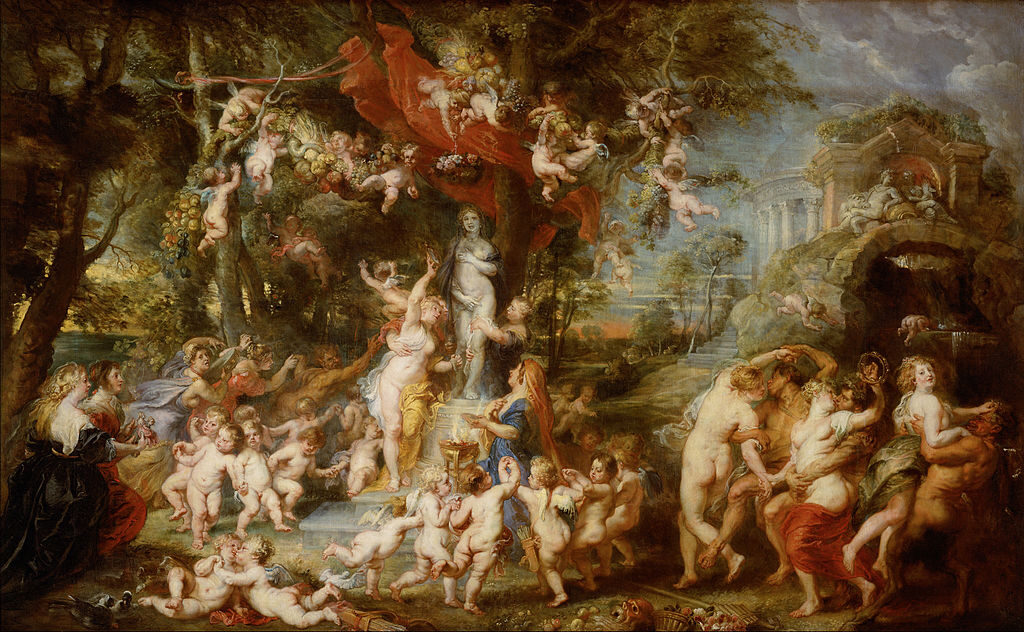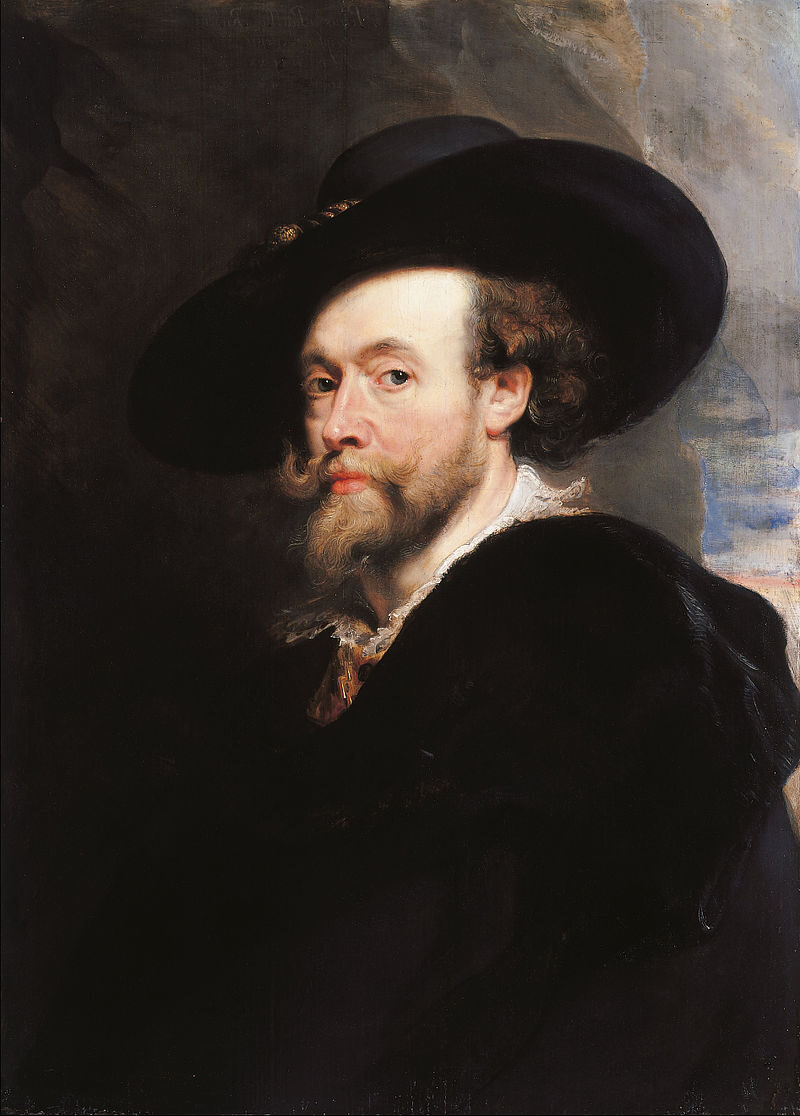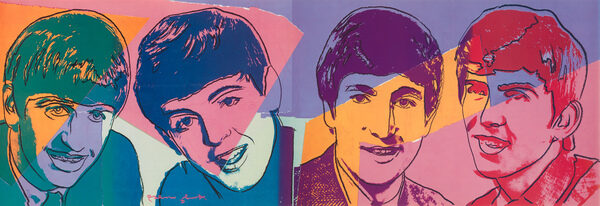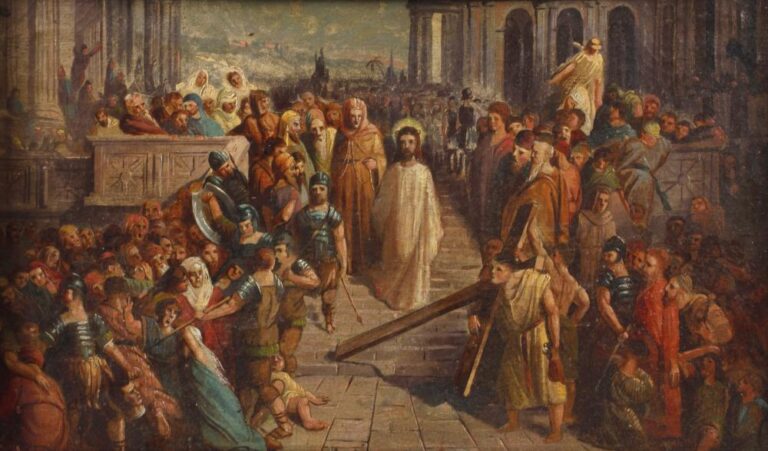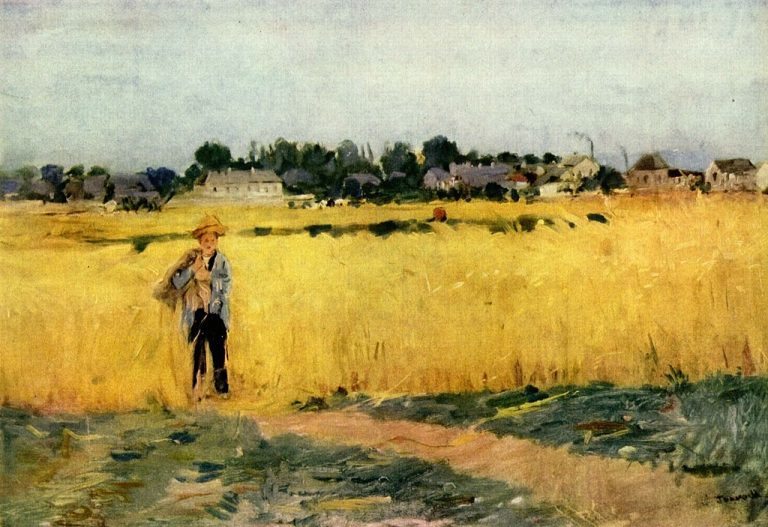Peter Paul Rubens: Painter Who Revolutionized Baroque Art in the 17th Century
Born: 28 June 1577, Nassau-Dillenburg, Holy Roman Empire
Death: 30 May 1640, Antwerp, Spanish Netherlands
Art Movement: Baroque
Nationality: Flemish
Teachers: Tobias Verhaecht, Adam van Noort, and Otto van Veen
Peter Paul Rubens: Painter Who Revolutionized Baroque Art in the 17th Century
Life and Career of Peter Paul Rubens
Peter Paul Rubens (1577-1640) led an extraordinary life as both a celebrated artist and skilled diplomat. His artistic journey took him across Europe, where he developed his distinctive Baroque style while serving royal courts and building an impressive workshop in Antwerp.
Early Life and Education
Born on June 28, 1577, in Siegen, Westphalia, Peter Paul Rubens was named after Saints Peter and Paul, whose feast day marked his birth. His early years were shaped by family circumstances and political upheaval.

Feasting and dancing peasants by Peter Paul Rubens, c. 1636
Rubens’ father, Jan Rubens, had fled Antwerp with his family to escape religious persecution under Spanish rule.
After his father’s death, Rubens moved with his mother to Antwerp, where his formal artistic training began. He apprenticed with several masters, including Tobias Verhaecht, Adam van Noort, and Otto van Veen.
These early teachers introduced him to both traditional Flemish techniques and classical influences.
By 1598, Rubens gained membership in the Guild of St. Luke, Antwerp’s painters’ guild. This official recognition marked the beginning of his professional career and opened doors to prestigious commissions.
Influence of Italian Renaissance
In 1600, Rubens journeyed to Italy, a decision that profoundly shaped his artistic style. He spent eight years abroad, primarily in Rome and Genoa, absorbing the techniques of Renaissance masters and classical antiquity.
The Duke of Mantua employed Rubens as court painter, providing him access to the Gonzaga family’s impressive art collection. During this period, he studied works by Titian, Michelangelo, and Raphael, whose influence became evident in his bold compositions and dynamic figures.
His Italian sojourn allowed him to develop his distinctive style—combining Northern European realism with Italian grandeur and drama. The frescoes of Giulio Romano particularly impressed him, inspiring the theatrical quality that would define his later work.
Rubens’ artistic reputation grew rapidly during this period. He received significant commissions from noble families and churches, establishing himself as a master of Counter-Reformation religious imagery.
Diplomatic Endeavors and Scholarly Pursuits
Upon returning to Antwerp in 1608, Rubens established himself as the city’s preeminent artist. He was appointed court painter to the Spanish Habsburg rulers of the Spanish Netherlands, creating a prosperous workshop that produced paintings for Europe’s elite.
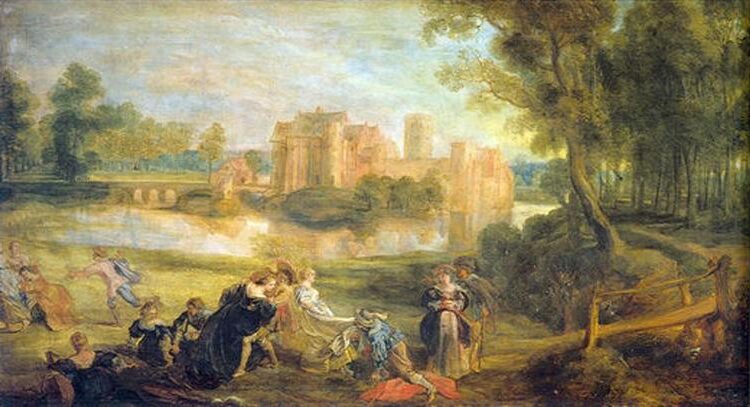
Castle Garden by Peter Paul Rubens, c.1630 – c.1635
His artistic reputation and sophisticated manner led to diplomatic assignments. Rubens conducted secret negotiations between England and Spain, earning the trust of both Philip IV of Spain and Charles I of England. Both monarchs eventually knighted him for his services.
Despite his diplomatic duties, Rubens maintained an incredibly productive studio. He employed talented assistants, including Anthony van Dyck, who would become a celebrated artist in his own right.
This workshop system allowed him to complete numerous large-scale commissions.
Rubens was also a dedicated scholar and collector. He spoke six languages and maintained correspondence with intellectuals across Europe. His home, now the Rubenshuis Museum, reflected his scholarly interests with an extensive collection of art and antiquities.
Final Years and Legacy
In 1630, after the death of his first wife Isabella, Rubens married the young Helene Fourment. Their relationship inspired many intimate portraits that showcase a more personal side of his art.
Rubens purchased the Château de Steen estate, where he spent his later years painting landscapes that revealed his deep appreciation for the Flemish countryside. These works show a more relaxed approach than his formal commissions.
By the time of his death on May 30, 1640, Rubens had transformed Baroque painting with his energetic “Rubenesque” style. His influence extended throughout Europe, inspiring artists like Diego Velázquez and shaping the development of seventeenth-century art.
Rubens left behind over 1,400 works. His legacy continued through his students and the countless artists who studied his techniques. Today, his dynamic compositions, vibrant colors, and full-figured subjects remain instantly recognizable as the epitome of Flemish Baroque painting.
Artistic Style and Influences

A View of Het Steen in the Early Morning, c. 1635–1638
Peter Paul Rubens developed a distinctive artistic style that blended Flemish naturalism with Italian Renaissance techniques and the emerging Baroque sensibilities. His dynamic approach featured rich textures, vibrant colors, and energetic compositions that would influence Western art for centuries to come.
Development of Baroque Style
Rubens’ style evolved significantly during his eight years in Italy (1600-1608), where he absorbed influences from Renaissance masters like Michelangelo, Raphael, and Leonardo da Vinci. He was particularly drawn to the dramatic lighting of Caravaggio and the color techniques of Venetian masters Titian, Tintoretto, and Veronese.
His mature style became characterized by sensuous exuberance, dynamic movement, and theatrical compositions. Unlike the formal styles prevalent during his time, Rubens created a rich Baroque approach that emphasized emotional intensity and visual splendor.
In religious works like “The Elevation of the Cross” and “The Descent from the Cross,” he demonstrated his Counter-Reformation sensibilities, creating powerful images that evoked strong emotional responses from viewers.
Iconic Works and Commissions
Rubens received prestigious commissions throughout Europe, creating masterpieces that showcased his versatile talent. His work for the Medici Cycle at Luxembourg Palace displayed his skill with allegorical history paintings on a grand scale.

Massacre of the Innocents by Peter Paul Rubens, 1637
“The Massacre of the Innocents” represents one of his most dramatic biblical narratives, demonstrating his ability to convey intense emotion through composition and color. The painting’s dynamic figures and dramatic lighting exemplify his Baroque sensibilities.
For the Banqueting House in London, Rubens created ceiling paintings glorifying King James I, masterfully combining mythology and contemporary politics. His religious altarpieces for churches like the Chiesa Nuova in Rome showed his ability to create powerful spiritual imagery.
His portraits, including the equestrian portrait of the Duke of Lerma, revealed his talent for capturing both the physical likeness and character of his subjects with unprecedented vitality.
Collaborations with Contemporary Artists
Rubens maintained a large workshop with numerous assistants and collaborators. He frequently worked with specialists like Frans Snyders, who excelled at painting animals and still lifes within his compositions.
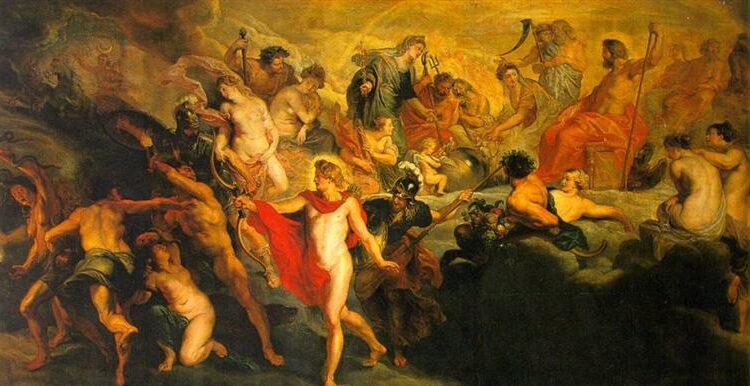
12. The Council of the Gods by Peter Paul Rubens, 1622 – 1625
His collaboration with Jan Brueghel the Elder produced remarkable works combining Brueghel’s detailed landscapes and Rubens’ figural compositions. These partnerships allowed Rubens to complete numerous commissions efficiently while maintaining quality.
Jacob Jordaens, one of his most talented pupils, developed his own distinctive style while absorbing Rubens’ dynamic approach. Through these collaborative relationships, Rubens’ influence spread throughout Flemish Baroque painting.
The division of labor in his workshop was sophisticated, with Rubens typically designing compositions and painting the most important elements while specialists completed other aspects. This collaborative approach shaped the development of artistic production in Northern Europe.
Art Collector and Influencer
Beyond his own artistic output, Rubens was an avid collector of art and antiquities. His extensive collection included works by Titian and other Old Masters, along with classical sculptures that informed his understanding of human anatomy.
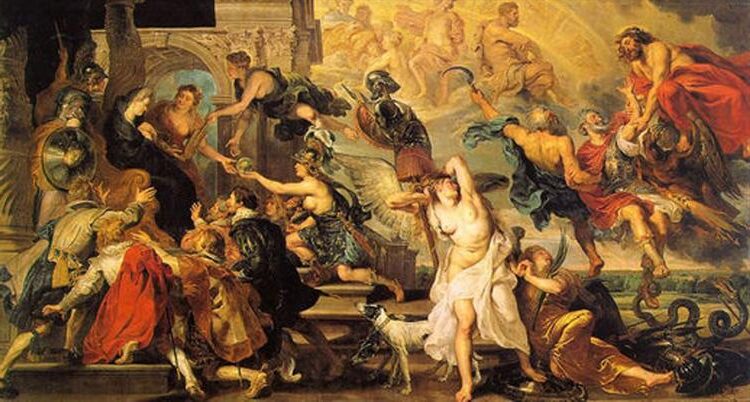
Apotheosis of Henry IV and the Proclamation of the Regency of Marie de Medici, 1622 – 1624
As a humanist scholar fluent in several languages, Rubens moved comfortably among Europe’s intellectual elite. This scholarly approach to art influenced his mythological paintings, which revealed deep knowledge of classical literature.
His diplomatic travels allowed him to view major collections across Europe, further broadening his artistic vision. The artistic dialogues he established between Flemish and Italian traditions created a truly international Baroque style.
Works by Rubens are now treasured in major museums worldwide, including the National Gallery in London, the Uffizi Gallery in Florence, and the National Gallery of Art in Washington, D.C. His artistic legacy continues to exemplify the emotional power and technical brilliance of Baroque painting.
Influence and Impact on Art History
Peter Paul Rubens left an indelible mark on art history that extends far beyond his lifetime. His dynamic style transformed Baroque painting and influenced generations of artists through both his work and teaching methods.
Beyond their cultural significance, Rubens’ paintings also illustrate the lasting financial value of art. Many of his works, created in the 17th century, are now among the most expensive Old Master paintings on the market. This enduring appeal highlights how artistic genius can transcend time, influencing both culture and the world of great fortunes.
The Rubenshuis Museum: A Testament to His Life
The Rubenshuis Museum in Antwerp, Belgium stands as a living monument to Rubens’ artistic and personal legacy. This was Rubens’ actual home and studio from 1610 until his death in 1640, where he created many of his masterpieces.
The museum preserves his living quarters, impressive art collection, and the studio where he trained apprentices. Visitors can see original works by Rubens and his contemporaries displayed in authentic settings.
The building itself reflects Rubens’ classical influences, featuring an Italian-style garden and a portico inspired by his travels. This architectural design demonstrates how he brought Renaissance ideas to the Netherlands.
The Rubenshuis serves as an important research center for scholars studying Flemish Baroque art and provides insight into the working methods of one of history’s most productive painters.
Rubens and the Flemish Baroque Movement
Rubens defined the Flemish Baroque movement through his bold, dramatic style. His work bridged Italian Renaissance techniques with northern European traditions, creating a distinctive approach that dominated seventeenth-century art.
His use of vivid colors, dynamic compositions, and powerful figures became hallmarks of Baroque painting. These elements conveyed emotional intensity and movement previously unseen in Flemish art.
As court painter to the Archdukes of the Spanish Netherlands, Rubens elevated Flemish art to international prominence. His diplomatic travels exposed him to diverse artistic traditions that he skillfully incorporated into his own style.
Rubens’ religious works were particularly influential during the Counter-Reformation. His dramatic altarpieces helped the Catholic Church communicate religious messages through emotional and accessible imagery.
His studio became the artistic center of Antwerp, attracting commissions from across Europe and establishing the city as a major cultural hub.
Legacy Through Apprentices and Followers
Rubens’ workshop operated like a well-organized artistic academy, training numerous talented artists who spread his influence throughout Europe. His most famous apprentice, Anthony van Dyck, became a celebrated court painter in England.
Other notable students included Jacob Jordaens, who continued the Flemish Baroque tradition after Rubens’ death. The workshop produced hundreds of paintings, with Rubens providing initial sketches and final touches while assistants executed middle stages.
His collaborative relationship with Jan Brueghel the Elder resulted in innovative paintings combining Brueghel’s detailed landscapes with Rubens’ expressive figures.
Rubens’ technical innovations influenced generations of Old Masters. His oil sketching technique, which allowed for quick compositional planning, became standard practice for many artists.
Even after his death, Rubens’ approach to color and dramatic composition continued to inspire artists from the Rococo period through to Delacroix and the Romantics in the 19th century.
Frequently Asked Questions
Peter Paul Rubens remains one of history’s most celebrated artists with a distinctive style and impressive body of work. His art continues to fascinate art historians, collectors, and casual admirers alike.
What subjects did Peter Paul Rubens favor in his artwork?
Rubens favored diverse subjects in his paintings, showcasing his versatility and broad interests. Religious themes dominated much of his work, including dramatic Biblical scenes and depictions of saints.
Mythological subjects from Greek and Roman traditions also appeared frequently in his portfolio, allowing him to display his mastery of the human form.
His court position led to numerous portraits of royalty and nobility, while he also produced impressive landscapes and hunting scenes that captured the energy of movement.
Which two masterpieces are considered Peter Paul Rubens’ most significant contributions to art?
“The Descent from the Cross” (1612-1614) stands as one of Rubens’ greatest achievements. This altarpiece in Antwerp Cathedral demonstrates his ability to convey profound emotion through dramatic composition and lighting.
“The Garden of Love” (1630-1632) represents another pinnacle of his artistry. This work showcases his mature style with its celebration of sensuality, rich color palette, and complex composition.
These masterpieces display his technical mastery and emotional depth that influenced generations of artists who followed.
Can you describe the life and times of Peter Paul Rubens?
Born on June 28, 1577, in Siegen, Westphalia, Rubens lived during the tumultuous period of the Eighty Years’ War. He received excellent education and training under established painters before traveling to Italy to study the Renaissance masters.
Rubens served as court painter to Isabella Clara Eugenia, ruler of the Spanish Netherlands. This position provided him with prestigious commissions and diplomatic opportunities.
He maintained a large workshop in Antwerp where he employed numerous assistants to help complete his many commissions. His diplomatic activities took him across Europe, allowing him to spread his artistic influence widely.
For what artistic achievements is Peter Paul Rubens best remembered?
Rubens is celebrated as the greatest exponent of Baroque painting’s dynamic and sensuous qualities. His energetic compositions broke from static Renaissance arrangements, introducing swirling movement and emotional intensity.
His mastery of color created richly textured surfaces that brought his subjects to life. The “Rubensian” figure—full-bodied and luminous—became an influential ideal in Western art.
His innovative workshop system allowed him to produce an enormous body of work while maintaining quality control. This business model revolutionized artistic production in the 17th century.
What are the current values of Peter Paul Rubens’ paintings on the art market?
Authentic Rubens paintings command extraordinary prices in today’s art market. Major works are valued in the tens of millions of dollars. His religious and mythological scenes typically achieve the highest valuations.
Museum-quality paintings rarely appear for sale, as most exist in permanent collections. When smaller works or those with partial studio involvement appear at auction, they still attract intense interest from collectors.
The provenance and condition significantly affect valuation. Paintings with a well-documented history and minimal restoration command premium prices.
Which of Rubens’ works holds the record for the highest auction price?
“The Massacre of the Innocents” set the record for a Rubens painting when it sold at Sotheby’s in 2002 for $76.7 million. This dramatic Biblical scene demonstrates Rubens’ ability to convey intense emotion and action.
Previously, experts wrongly attributed the painting to one of Rubens’ assistants. Its reattribution to the master himself dramatically increased its value. The painting now resides in the Art Gallery of Ontario following its purchase by collector Kenneth Thomson.
This record-breaking sale confirmed Rubens’ enduring market appeal and his position among the most valuable Old Master painters.

